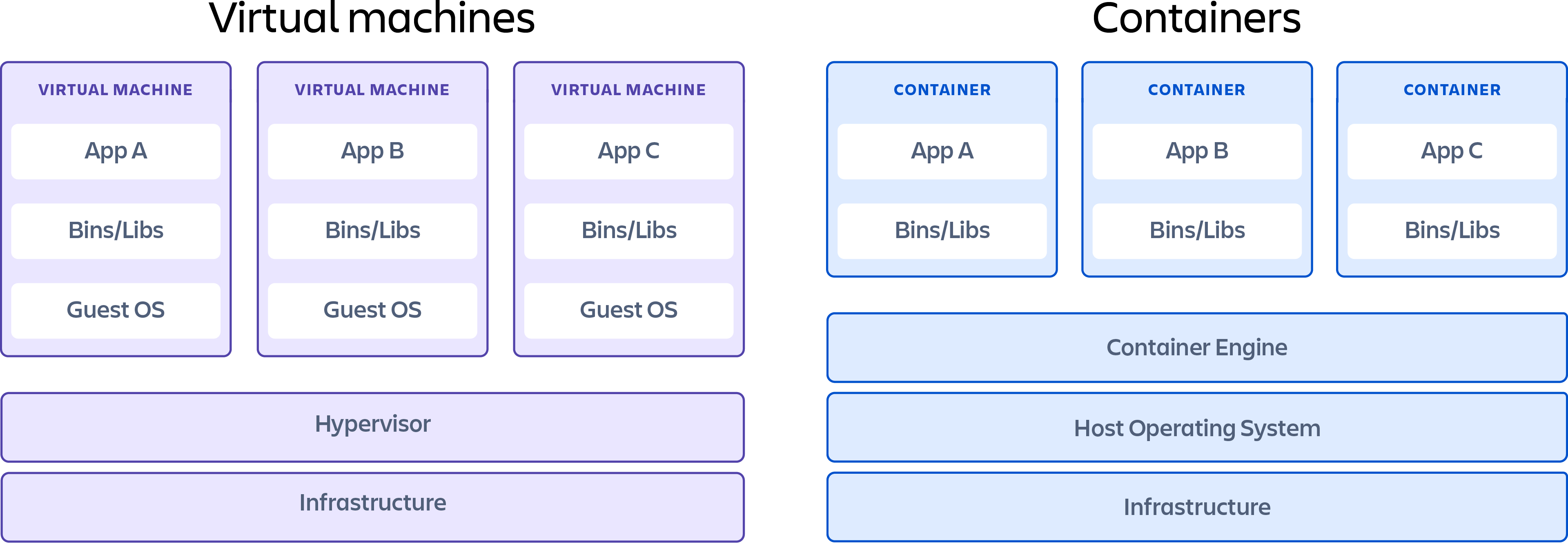name: title layout: true class: center --- layout: false count: false .center[ <a href="https://www.nipreps.org/assets/fmriprep-bootcamp-geneva2024/day1-04-containers/"> <img src="images/qr-talk-url.svg" alt="workflow" style="width: 20%" /> <br /> https://www.nipreps.org/assets/fmriprep-bootcamp-geneva2024/day1-04-containers/ </a> <br /> <br /> ## Containers Chris Markiewicz <<code>markiewicz@stanford.edu</code>> Oscar Esteban <<code>phd@oscaresteban.es</code>> ] --- name: newsection layout: true .perma-sidebar[ <p class="rotate"> <a rel="license" href="http://creativecommons.org/licenses/by/4.0/"><img alt="Creative Commons License" style="border-width:0; height: 20px; padding-top: 6px;" src="https://i.creativecommons.org/l/by/4.0/88x31.png" /></a> <span style="padding-left: 10px; font-weight: 600;">Day 1 :: Containers</span> </p> ] --- # Outlook .right-column3.center[ <a href="https://www.nipreps.org/assets/fmriprep-bootcamp-geneva2024/day1-04-containers/"> <img src="images/qr-talk-url.svg" alt="workflow" style="width: 100%" /> <br /> https://www.nipreps.org/assets/fmriprep-bootcamp-geneva2024/day1-04-containers/ </a> ] .left-column3[ .large[ <br /> * What are containers and why researchers care? * Docker * Apptainer ]] ??? --- <br /> <br /> <br /> <br /> <br /> <br /> .boxed-content[ .large.center[ # What are containers? ] .large.center.gray-text[Why do we care?] ] --- <br /> <br /> <br /> <br /> <br /> <br /> .boxed-content[ .large[ *A container is a unit of software that packages code with its required dependencies in order to run in an isolated, controlled environment. This allows you to run an application in a way that is predictable, repeatable, and without the uncertainty of inconsistent code execution across diverse development and production environments. A container will always start up and run code the same way, regardless of what machine it exists on.* ] .large.center.gray-text[https://www.digitalocean.com/community/conceptual-articles/introduction-to-containers] ] --- count:false <br /> <br /> <br /> <br /> <br /> <br /> .boxed-content[ .large[ *A container is a unit of software that packages <mark>code with</mark> its required <mark>dependencies</mark> in order to run in an <mark>isolated</mark>, controlled environment. This allows you to run an application in a way that is <mark>predictable, repeatable</mark>, and without the uncertainty of inconsistent code execution across diverse development and production environments. A container will always start up and run code the same way, <mark>regardless of what machine</mark> it exists on.* ] .large.center.gray-text[https://www.digitalocean.com/community/conceptual-articles/introduction-to-containers] ] --- count:false <br /> <br /> <br /> <br /> <br /> <br /> .boxed-content[ .large[ *A container is a unit of software that packages code with its required dependencies in order to run in an isolated, controlled environment. This allows you to run an application in a way that is predictable, <mark>repeatable</mark>, and without the uncertainty of inconsistent code execution across diverse development and production environments. A container will always start up and run code the same way, regardless of what machine it exists on.* ] .large.center.gray-text[https://www.digitalocean.com/community/conceptual-articles/introduction-to-containers] ] --- # Isn't this the same as virtual machines? <br /> .boxed-content[ <figure style="width: 100%">  <figcaption>From <a href="https://www.atlassian.com/microservices/cloud-computing/containers-vs-vms">the Atlassian documentation</a></figcaption> </figure> ] --- <br /> <br /> <br /> <br /> <br /> <br /> .boxed-content[ .large.center[ # <i class="fa-brands fa-docker" style="font-size: 3em"></i> Docker] ] --- # First contact with docker .boxed-content.pad-top[ <div class="asciicast" id="636539" data-src="images/docker-hello-world.cast"></div> ] --- # Container Images .boxed-content.pad-top[ .no-bullet[ * .large[<i class="fa-solid fa-box"></i> Images are software bundles] * .larger[when executed become containers] * .large[<i class="fa-solid fa-layer-group"></i> Images are made of layers] * .larger[each layer encapsulates a set of filesystem changes] * .larger[layers are akin to software deployment steps] * .large[<i class="fa-solid fa-square-pen" style="color: #ff0f0f;"></i> Layers are **unmutable**] * .larger[except for a R/W layer that is added on top by the container runtime] * .large[<i class="fa-solid fa-file-prescription"></i> Layers are described in the `Dockerfile`] * .larger[The `Dockerfile` establishes the instructions to create an image] * .larger[The `Dockerfile` is some sort of recipe] ] ] --- # Building an image: docker/whalesay ## 1 The `Dockerfile` .boxed-content[ ```Dockerfile # Containers are generally bootstrapped from an existing OS image # Alpine Linux is a Linux distribution very small and simple # It's special in that it is not based on the GNU Core Utilities FROM alpine # Our container will need perl RUN apk add --no-cache perl # Copy the original 'cowsay' program into one layer COPY cowsay /usr/local/bin/cowsay # Ensure permissions RUN chmod a+rx /usr/local/bin/cowsay # Copy the replacement of the cow asciiart with a whale COPY docker.cow /usr/local/share/cows/default.cow # Instruct the runtime to execute the new program ENTRYPOINT ["/usr/local/bin/cowsay"] ``` ] --- # Building an image: docker/whalesay ## 2 The `cowsay` script .boxed-content[ Because it is a very long perl script, we just download it: ```bash $ curl https://raw.githubusercontent.com/docker/whalesay/master/cowsay -o cowsay ``` ] --- # Building an image: docker/whalesay ## 3 The replacement for the cow (`docker.cow`) .boxed-content[ ``` Perl ## ## Docker Cow ## $the_cow = <<EOC; $thoughts $thoughts $thoughts EOC $the_cow .= <<'EOC'; ## . ## ## ## == ## ## ## ## ## === /"""""""""""""""""\___/ === { / ===- \______ O __/ \ \ __/ \____\_______/ EOC ``` ] --- # Building an image: docker/whalesay ## 4 Build it .boxed-content[ ```bash $ docker build -t oesteban/whalesay . ``` ] --- # Building the image .boxed-content.pad-top[ <div class="asciicast" id="636540" data-src="images/docker-build.cast"></div> ] --- # Docker images and the *Docker Hub* .boxed-content.pad-top[ .no-bullet[ * .large[Images can be distributed through **registries**.] * .larger[*Docker*'s official registry is called *Docker Hub*] * .larger[Thanks to *Docker Hub* we could fetch and execute the `hello-world` image] * .larger[Website: [hub.docker.com](https://hub.docker.com/)] * .large[Let's download two interesting images:] * .larger[*MRIQC*] ``` Bash docker pull nipreps/mriqc:latest ``` * .larger[*fMRIPrep*] ``` Bash docker pull nipreps/fmriprep:24.1.0rc0 ``` ] ] --- # Fetching images & the R/W runtime layer .boxed-content.pad-top[ <div class="asciicast" id="636541" data-src="images/docker-pull.cast"></div> ] --- # Docker is not generally available at HPC systems .boxed-content.pad-top[ <div class="asciicast" id="636542" data-src="images/apptainer-pull.cast"></div> ] --- # Pulling *MRIQC*'s image on the cluster .boxed-content.pad-top[ <div class="asciicast" id="636543" data-src="images/apptainer-mriqc-pull.cast"></div> ] --- <br /> <br /> <br /> <br /> <br /> <br /> .boxed-content[ .large.center[ # Exercise ] .large.center.gray-text[Pull **docker://nipreps/fmriprep:24.1.0rc0** on the cluster] ]